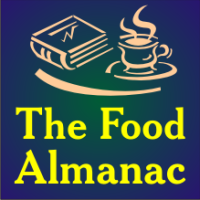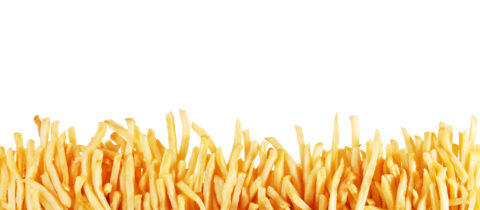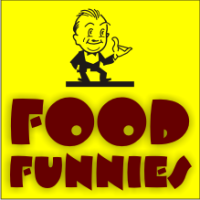 September 6, 2017
September 6, 2017
Days Until. . .
Restaurant Week: September 11-17. Fettuccine Frenzy: Wednesdays, Thursdays & Fridays through September @ Middendorf's.
Annals Of Dark Days
Today in 2005, New Orleans suffered a low point in its history. Uncontrollable flooding of over eighty percent of the city caused by Hurricane Katrina's storm surge and the levees it pierced had the city in complete chaos. Fires and looting were going on all over town. Mayor Nagin ordered everyone who was still in the city to leave. More than a few continued to hold out in the French Quarter, however, and would continue to do so. Johnny White's Bar stayed open. Elsewhere around town, new horrors unfolded moment by moment. One piece of good news: the first restaurants in the area to reopen did so, on the North Shore.
Today's Flavor
It's National Fresh-Cut French Fry Day. Perhaps the most convincing proof that popularity has a way of settling on mediocrity is that over 99 percent of all French fries served in America--in homes as well as restaurants--start as frozen, pre-cut potatoes.
It's understandable. Preparing fresh-cut fried potatoes is not easy. We have learned this in our own kitchen, where our kids clamor for fries whenever they detect a weakness in our hesitancy. For a long time, we blanched the fries in boiling water for a couple of minutes, set them aside to dry, then fried them in rather hot oil. We kept coming up with greasy, limp fries unless we took them out when they'd just begun to brown, let them cool, then drop them into even hotter oil for a few seconds.
 One day we tried lowering the temperature of the oil. I started at 325 degrees, with a fistful of fries that had not been blanched, but were just sitting in cold water since they'd been cut. (You must do this, or the starches start turning brown.) The fries took a long time to brown, but ultimately they were absolutely perfect: crisp, not greasy or soggy, soft on the inside. I kept going with the oil at that temperature, disregarding the fact that whenever I added a new batch of potatoes the oil temperature dropped by quite a bit. But then it recovered before the potatoes were even close to being cooked, and that gave the fries a good long frying. I suspect that the effect is the same as frying twice, but in one long step instead of two short ones. I also learned that one must limit the number of fries in the pot at one time to a little less than you might be inclined to put in there.
One other thing: when you buy the big, white, russet potatoes for this, scratch the skin with your fingernail. If you see any hint of green, put that potato down and find some that go from brown right to white under the skin. As for the oil, I generally use canola oil, but corn oil worked perfectly on one batch.
One day we tried lowering the temperature of the oil. I started at 325 degrees, with a fistful of fries that had not been blanched, but were just sitting in cold water since they'd been cut. (You must do this, or the starches start turning brown.) The fries took a long time to brown, but ultimately they were absolutely perfect: crisp, not greasy or soggy, soft on the inside. I kept going with the oil at that temperature, disregarding the fact that whenever I added a new batch of potatoes the oil temperature dropped by quite a bit. But then it recovered before the potatoes were even close to being cooked, and that gave the fries a good long frying. I suspect that the effect is the same as frying twice, but in one long step instead of two short ones. I also learned that one must limit the number of fries in the pot at one time to a little less than you might be inclined to put in there.
One other thing: when you buy the big, white, russet potatoes for this, scratch the skin with your fingernail. If you see any hint of green, put that potato down and find some that go from brown right to white under the skin. As for the oil, I generally use canola oil, but corn oil worked perfectly on one batch.
Annals Of Food Stores
Despite predictions that it would fail, the first Piggly Wiggly opened on this date in 1916 in Memphis. It was unlike any other grocery store of that time in being self-service. Shopping baskets, open shelves, no clerks to shop for the customer--unheard of!
Food Inventions
Today in 1899, Carnation Evaporated Milk was introduced by Eldridge Amos Stuart in Kent, Washington. He saw a demand in places where fresh milk was unavailable. He specifically was thinking about prospectors heading for the Yukon. Evaporated milk has over half the water boiled away from it, which makes it shelf-stable in a vacuum can. The process has the added effect of producing a much richer liquid, imitating some of the qualities of cream, but at a lower price. Many of us in the Baby Boom generation remember evaporated milk as our parents' coffee creamer of choice; that preference has largely faded. Stuart took the name "Carnation" from a brand of cigar; he thought it was strange for a stogie, but perfect for creamy canned milk. We cannot bring up Carnation Milk without republishing, for the zillionth time, a bit of doggerel allegedly written about it a century ago: Carnation milk is the best in the land Here I sit with a can in my hand No teats to pull, no hay to pitch You just punch a hole in the son of a bitch. Fortunately, this appears to be just an urban legend.
Gourmets Through History
Marie-Joseph-Paul-Yves-Roch-Gilbert du Motier, Marquis de Lafayette, was born today in 1757. Lafayette was a French nobleman who felt it his duty to assist the Americans in their revolution, and did so with such ardor, never accepting recompense, that he is one of only six people ever to have been named an Honorary Citizen of the United States. He is also the man who is honored by all the things named "Lafayette" in New Orleans and Louisiana, where he is particularly admired because of the area's French heritage. He gave up his titles and participated in the French Revolution, a thankless task in those insane times. (He ultimately spent years in prison and lost everything.) He was a man of refinement. I think there ought to be a restaurant in New Orleans named for him, but to my knowledge there never has been.
Edible Dictionary
poularde, French, n.--A fat female chicken, bigger than a poulette (fryer) but not as big or as old as a hen. It's not often done anymore, but classically a chicken was spayed to become poularde. Like many neutered animals, it began putting on weight after the procedure. This made her especially suitable for roasting. The word is no longer common in restaurants (although I remember when it was). But it seems the kind of thing we maybe ought to bring back.
Deft Dining Rule #306:
You're not in a great French restaurant unless a sauce spoon appears in your place setting at some point during the meal.
Gourmet Gazetteer
Wisconsin boasts two Squash Lakes. One is in the northeast corner of the state, twenty miles south of the Michigan state line. That one looks more like a horse's head than a squash, really. It's in a mix of farmland and woodlands, with hundreds of other small lakes in the vicinity. The most promising place to eat is Era Dining House, on Catfish Lake Road in Eagle River, three miles north. The other Squash Lake is a forty-mile drive southeast. It's a good deal larger, with three lobes, the northern one is shape like a dog's head. Its shores are dotted with docks, so the fishing must be good. Four miles west on US 8 is a restaurant called Ulterior Motives. Three more miles the same road has a junction with US 51, which you can drive all the way down to New Orleans.
Annals Of Scotch
Joseph Kennedy, the father of President John F. Kennedy and his brothers Bobby and Teddy, was born today in 1888. He led an almost impossibly lucky life in politics and business, always seeming to be in the right place at the right time. His family's fortune came from the liquor business, and even through Prohibition it somehow managed to thrive--by bootlegging, it has been rumored. Kennedy is sometimes credited with making Scotch whisky popular in this country.
Food Namesakes
Sir Edward Appleton was born today in 1892. He discovered the layer of the atmosphere that reflects radio waves, thereby allowing long-distance transmission of shortwave signals, as well as those of stations on the AM band now. . . The pop-rock group Bananarama had a Number One hit today with Venus. . . Roger Waters, composer and bass player for Pink Floyd, became another brick in the wall of humanity today in 1943. . . Country singer Mark Chesnutt was born today in 1963. . . Bob Lemon was named manager of the Yankees for the second time today in 1981.
Words To Eat By
"Reagan promised everyone a seven-course dinner. Ours turned out to be a possum and a six-pack."--Jim Hightower, populist politician and Texas Agriculture Commissioner.
Words To Drink By
"A man may surely be allowed to take a glass of wine by his own fireside."--
Richard Brinsley Sheridan.
[divider type=""]

Onion-Slicing Tears
The other side of this common kitchen syndrome.Click here for the cartoon.
[divider type=""]